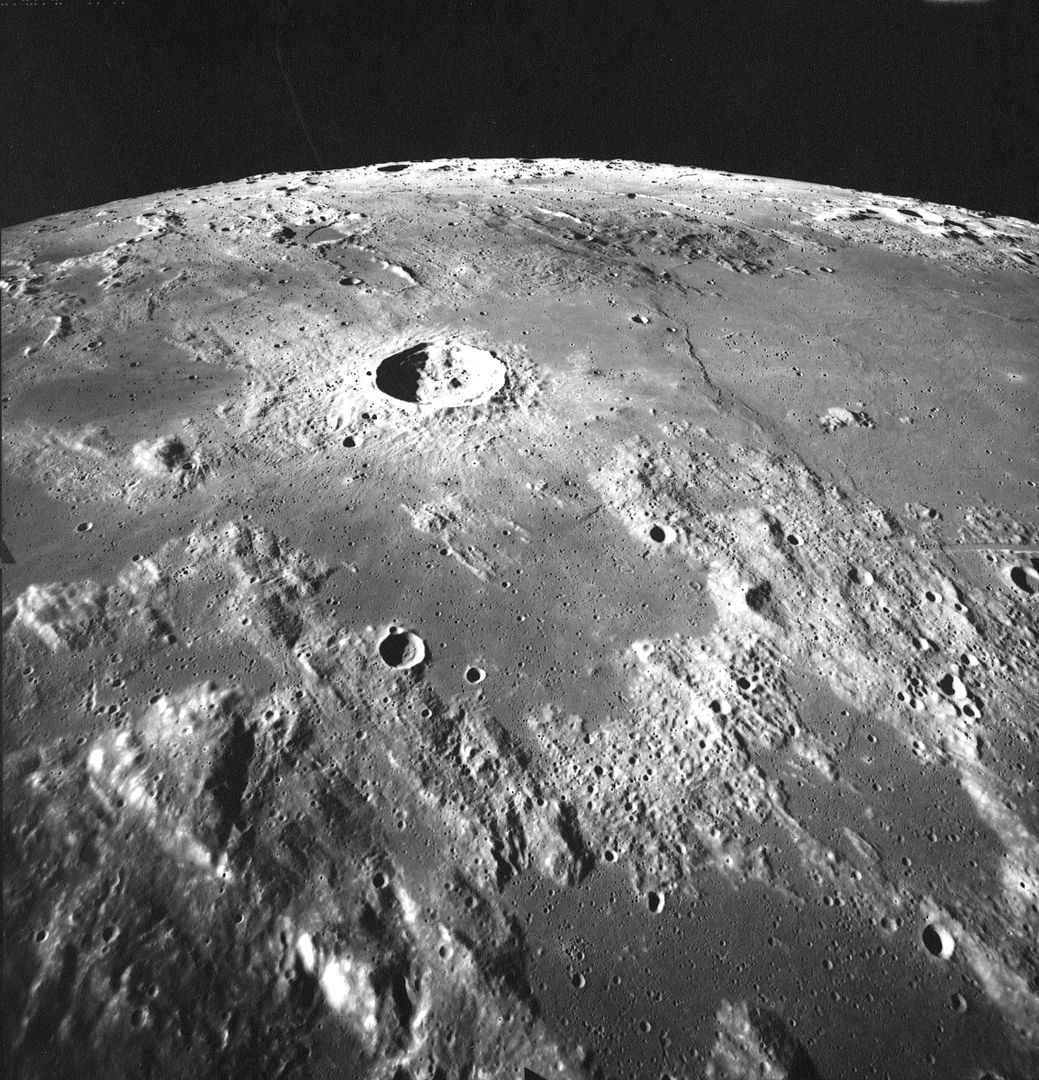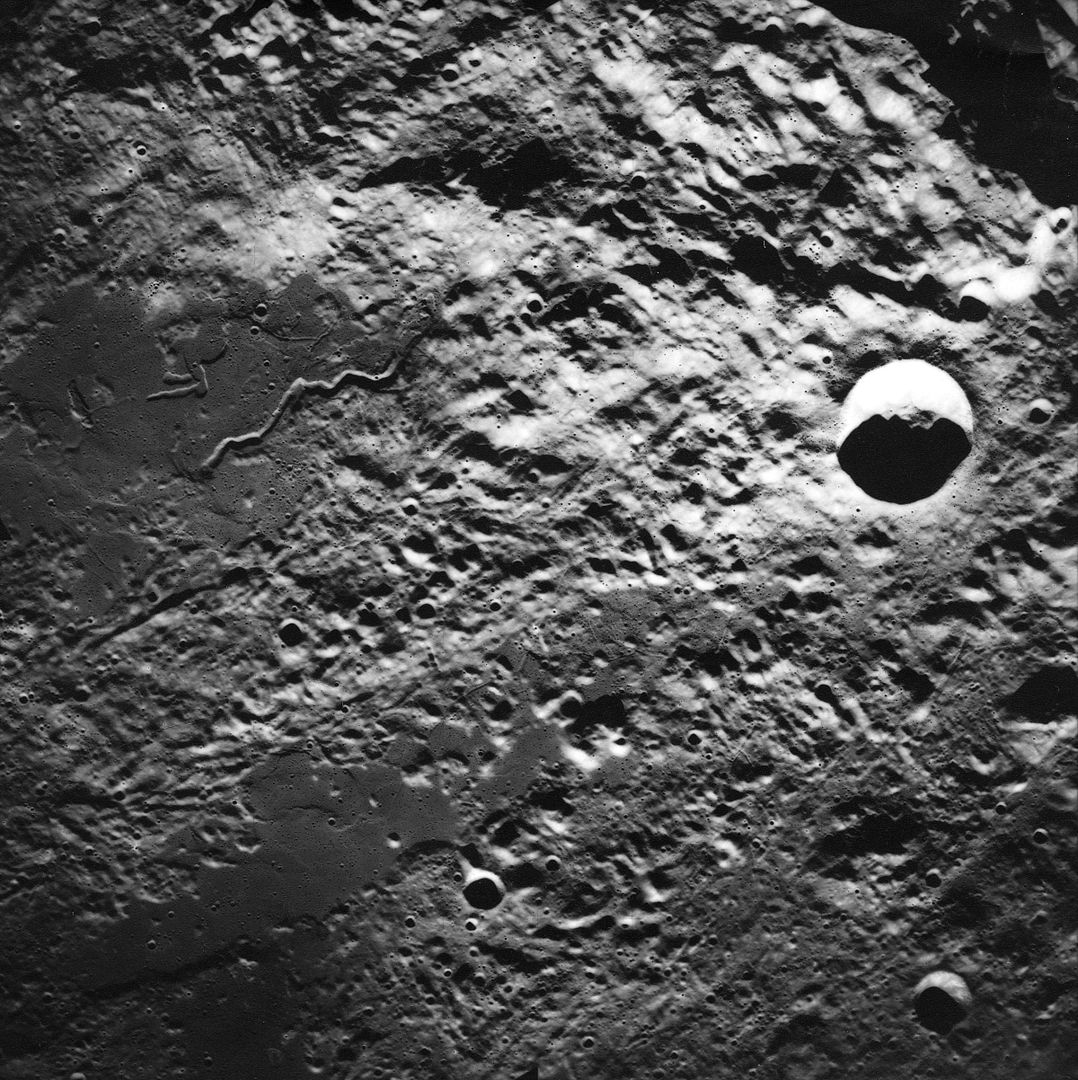I'm teaching a course this fall on the geology of our solar system. It's my first time teaching it so I've been spending a lot of time looking at imagery of the planets and their moons. We live in an amazing age where there are spacecraft that are currently investigating Saturn, Jupiter, Mars, a comet (until later this week, that is), an asteroid, and our Moon. In addition to all the missions that are happening now, there's a tremendous legacy of imagery from older spacecraft, including fabulous images from the Apollo missions to the Moon.
I've just begun to scratch the surface of the thousands of images in the Apollo Image Atlas. This afternoon I was looking at just two orbits of images captured in 1972 by Apollo 17's Mapping (aka Metric) Camera. The camera was located in the Command Service Module's instrument bay and returned images like this one that looked at the Moon's horizon:
This shot was captured during Apollo 17's 36th orbit about the Moon. Thankfully, the website contains maps that show which way the various images are orientated. That's the nearside crater Manilius near the center above and Mare Vaporum (the Sea of Vapors) is the smooth, dark area to its right. Names aside, it is a starkly beautiful view of the Moon.
The mapping cameras also took images pointed directly downward. Here's a shot from orbit 38:
This shot contains a curvy rille at left, a prominent crater at right and mountains throughout that are on the edge of the Sea of Serenity. It is an area that's not too far from where the first photo I posted was taken.
I decided to take the images that I downloaded and turn them into two short movies, which I have posted below.
I've just begun to scratch the surface of the thousands of images in the Apollo Image Atlas. This afternoon I was looking at just two orbits of images captured in 1972 by Apollo 17's Mapping (aka Metric) Camera. The camera was located in the Command Service Module's instrument bay and returned images like this one that looked at the Moon's horizon:
This shot was captured during Apollo 17's 36th orbit about the Moon. Thankfully, the website contains maps that show which way the various images are orientated. That's the nearside crater Manilius near the center above and Mare Vaporum (the Sea of Vapors) is the smooth, dark area to its right. Names aside, it is a starkly beautiful view of the Moon.
The mapping cameras also took images pointed directly downward. Here's a shot from orbit 38:
I decided to take the images that I downloaded and turn them into two short movies, which I have posted below.
Watching them is not that same as flying to the Moon, but it is an amazing view.


No comments:
Post a Comment